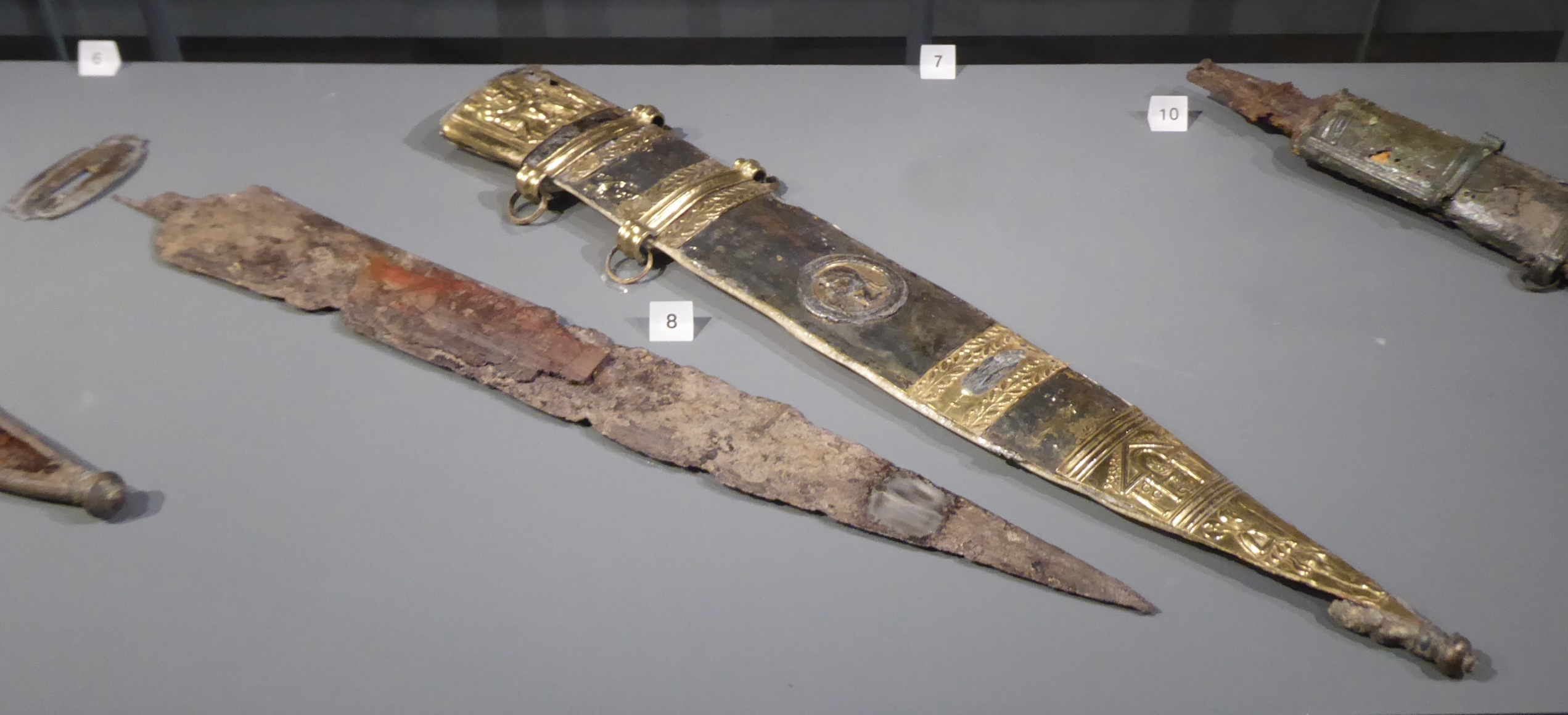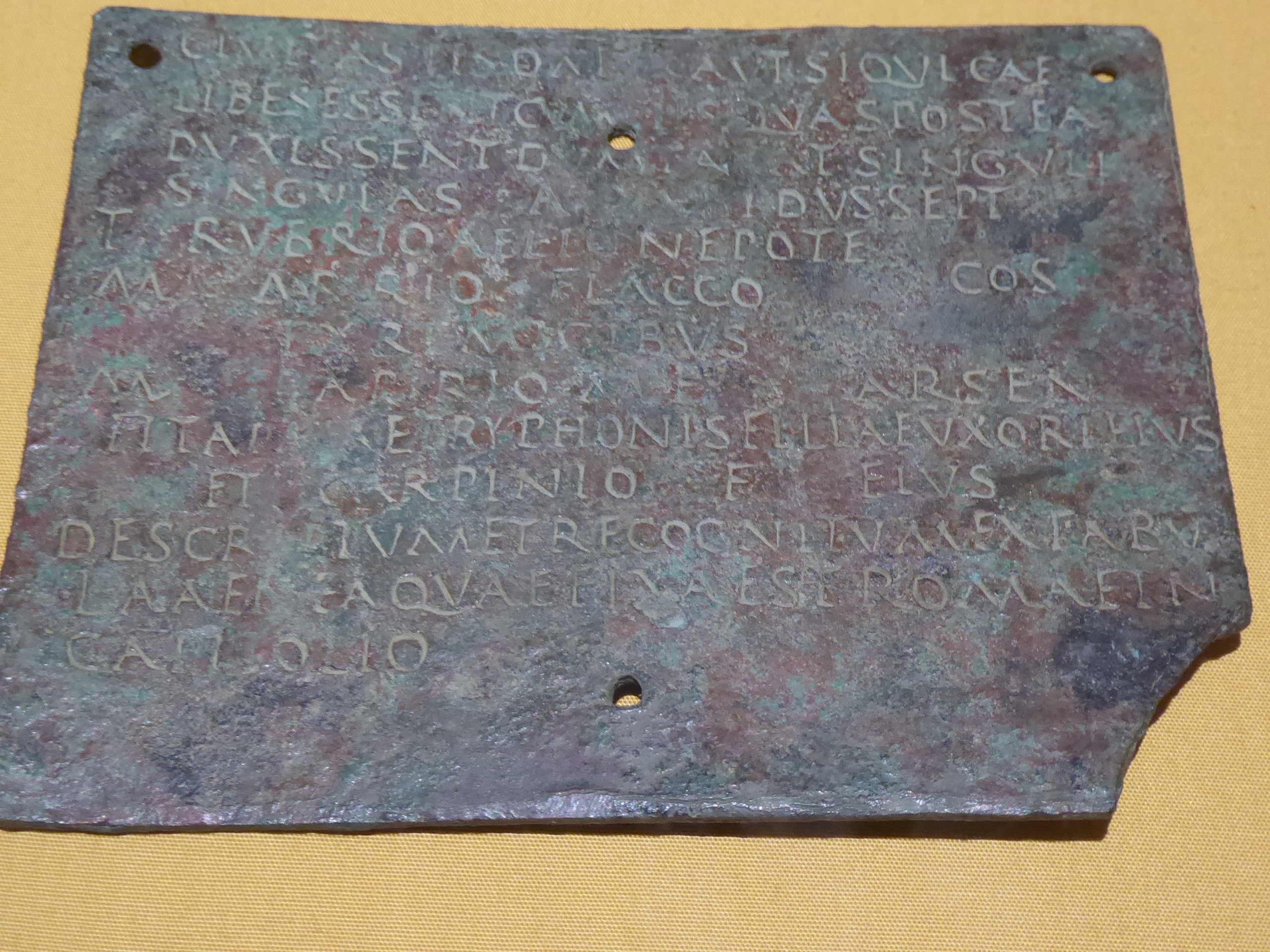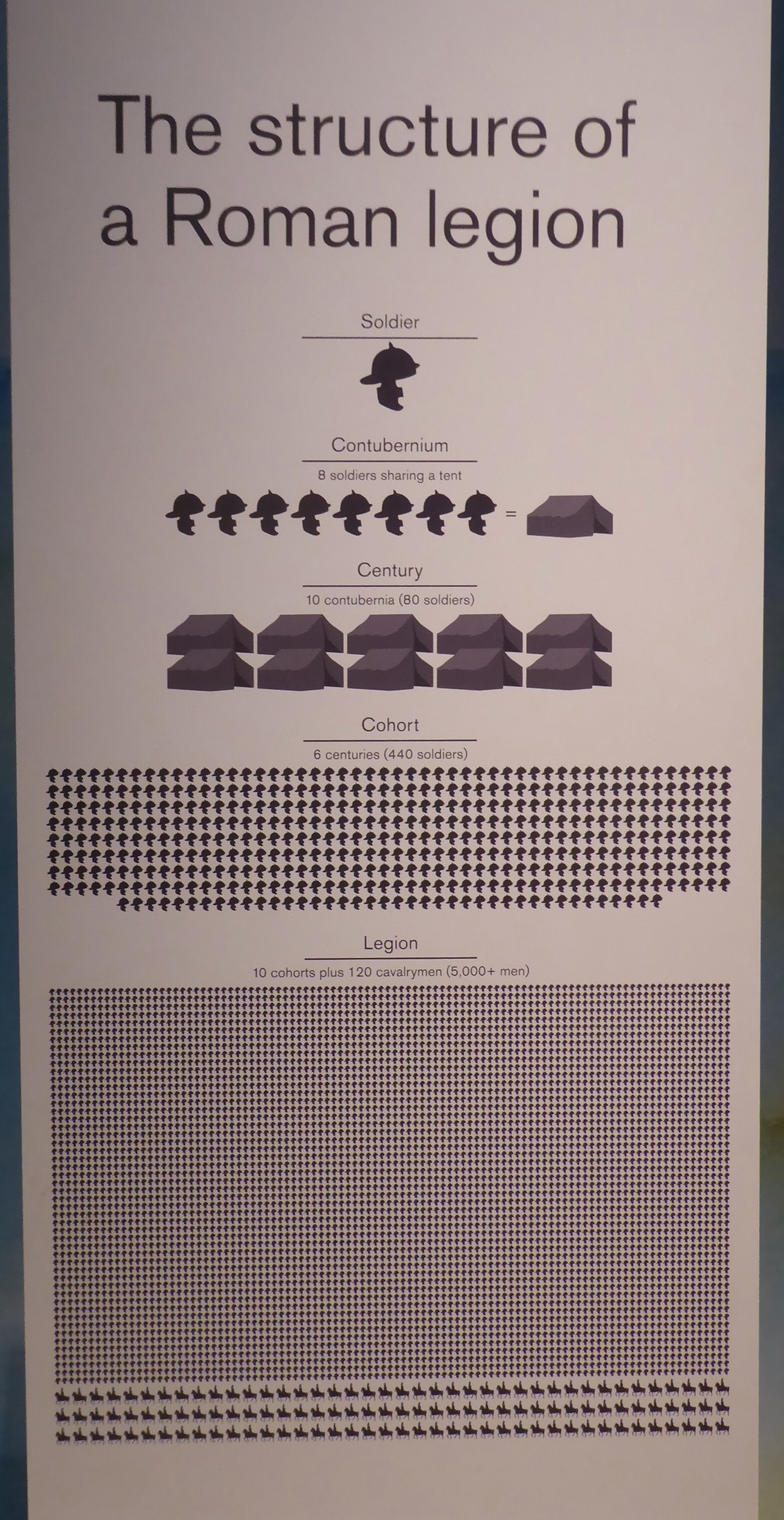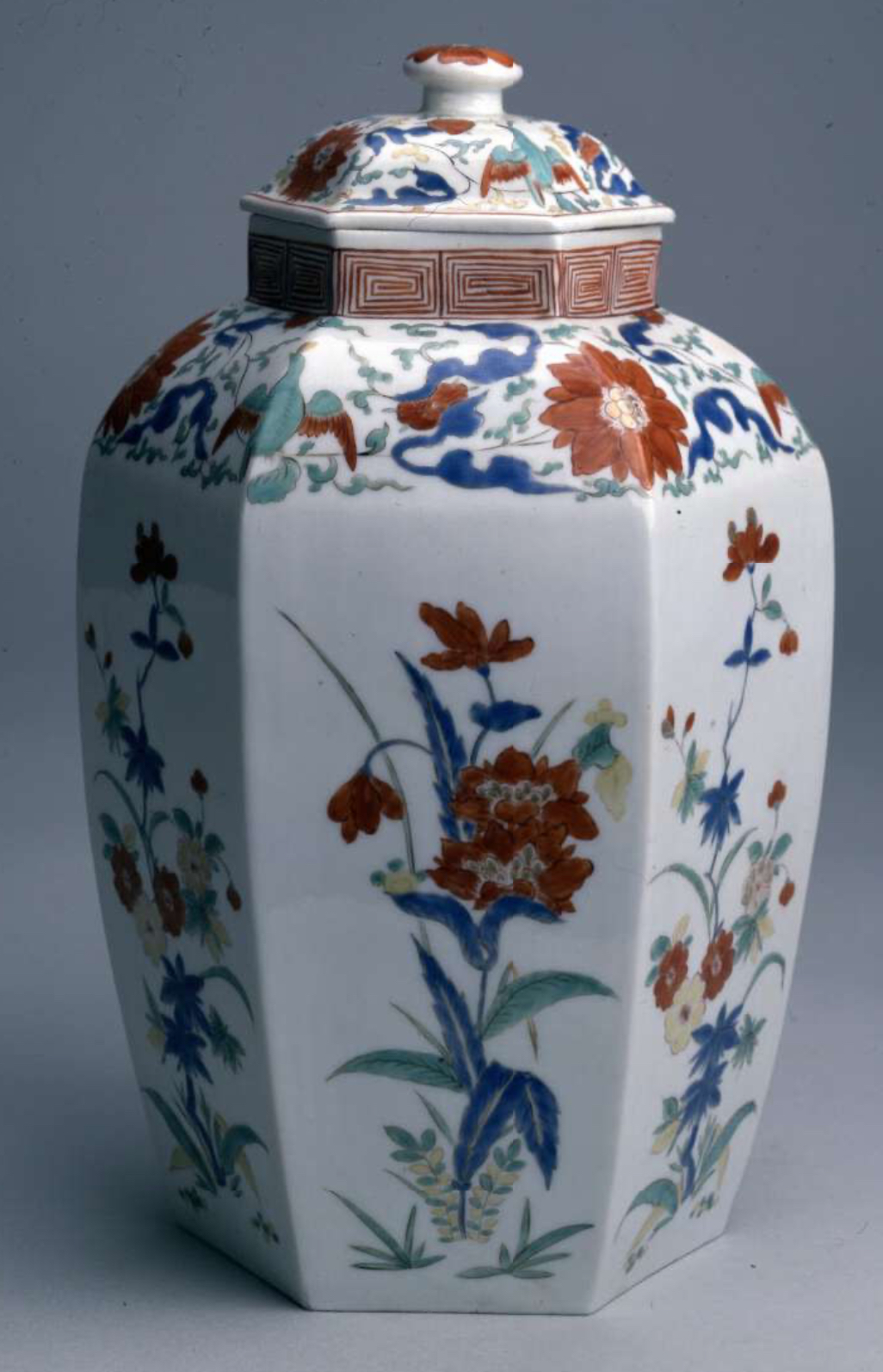I went to see the new exhibition about Roman legionaries. Not my usual thing – and definitely not at the weekend – but train strikes have kept me in London and it seemed interesting enough.
As indeed it was. Curmudgeon that I am, I could have done with a less family-friendly vibe – but they’re the exhibition-goers of the future, not me. These are the other thoughts that I took away from my visit:
- There was a shield from AD 200s – the only surviving wooden long shield (scutum) – which was discovered in Syria. Next to it was a boss from AD 100s of the kind that would have covered the central hole and protected the elbow. That was discovered in . . . the River Tyne. As an example of the reach and standardisation of the Roman empire, these two items together take some beating.
- Lots of artefacts – monuments, armour, weapons – on loan from German museums, particularly along the Rhine. It made me feel guilty about always giving Landesmuseums the go-by when I’m in Germany.
- I’m still trying to get my head around the fact that a century consisted of 80 soldiers, not 100.
- Unsurprisingly, there were a lot of artefacts found in Britain: I felt quite at home with the Ribchester and Crosby Garrett helmets (bizarre as it was to think of them as armour).
- Roman soldiers signed on for 25 years. Until Caracalla made all free men in the Roman empire citizens, army service was one way to gain citizenship. On display was a bronze diploma of citizenship awarded to a soldier (plus one wife and their children) who had completed his 25 years. He retired in Britain and the diploma was discovered in Hungary.









And then, after three days of roaming among familiar cultures and eras, I decided I wanted a complete change and (with Tokyo Story in mind) headed to the Japanese galleries. Instead of the desired shift, however, I only saw continuities: earthenware pots, jewellery and iron weapons – pretty much the same kind of artefacts that you get from European civilisations from the BC era. Even the decorative art from the Edo period (1603-1868) looked entirely familiar – one Kakiemon-style hexagonal pot (admittedly made for export to Europe) had its Doppelgänger in the European gallery – this time manufactured in Meissen. Like the Roman shield, it triggered a few thoughts about early globalisation.




Despite the morning’s encounter with plenty of Roman armour and weapons, the items that struck me as most unusual were the samurai armour and the sword guard. The armour was made of metal, paper, lacquer, stencilled leather, hemp fibre, water buffalo horn, wood and gold . . . and was embellished with pink ribbons. The sword guard, with its hare, crescent moon and plants, was so lovely that it instantly went on my “to steal” list.
It was also dreadfully crowded – so many tourists (including me, of course) even in February. It deters me from doing this again. Places like Sambourne House seem far more attractive.
After such overload I had to recover in the restaurant over a l o n g lunch.
